The local fair was one of the highlights of the year here in Alliston. The original fair building was lost to fire and then had to be relocated with the arrival of the Canadian Pacific Railway line in town. The Citizens Association of Alliston purchased the land that the
building sits on now in 1907. The Alliston Fall Fair was touted as the “Biggest and Best Fair in South Simcoe” with over $1000.00 in prizes. In 1909 the Citizens Committee offered the land ‘Riverdale Park’ to the Town. The local M.P.P at the time “was pleased to see that the Agricultural Society was not entirely composed of farmers… The town and the farmers needed each other and by
cooperation could contribute to each other’s success.”
In 1914 the Agricultural Society, the Park Committee and Town Council proposed to erect a building for the safety of exhibits and shelter for attendees. It “will be one of the finest facilities in the County”. “With this building and the new track Alliston fair will this fall enter a new era in its history and rise to a class vastly superior to the one in which it has been placed in the last few years.” Over 2000 people attended the fair that year. ‘The hall was universally admired, stable the best they ever saw, track was all but perfection, midway largest in years.” The Mayor offered the building as a drill hall and recruitment centre in 1914. In 1916 Over 4000 people attended the fair. “It was the greatest event of its kind in this town for many years and perhaps in the history of the town.” People came from Tottenham, Bolton, Cookstown, Beeton and the newly built Camp Borden. By 1919 people from Orillia down to Toronto were coming to Alliston to this fair building.
In 1922 plans to add a zoo fell through. In 1924 over 7000 people attended the Fair. In 1928 one of the fair directors was T.P Loblaw (a local boy soon to be famous for his chain of grocery stores). In 1931 the local improvement committee wanted to increase the use of the Agricultural Building by putting in a hardwood floor and plaster walls to make it into an auditorium. The local Lions Club endorsed this suggestion and further suggested it be a recreation centre. In 1937 the Lions had a large dance where almost 1000 people attended. “Many didn’t start arriving until 9:30pm and stayed well into the morning hours, refreshments at midnight.” The Lions Club continued to use the building for Town activities for 8 years.
The Dorthea Knitting Mill leased the building in 1945 and employed many local women. Today names are carved in brick outside with different years. One woman told staff that she was a summer student at the Dorthea Knitting Mill when she as sixteen years old. She found her name carved in to the wall and pointed it out to her grandchildren. In the late 1950’s a citizens group started looking for a place to house a community museum. The Agricultural Fair Building in Riverdale Park was the obvious choice. By 1960 the South Simcoe Pioneer Museum opened its doors to showcase the history of the community. It employed local summer students and volunteers.
Fifty-four years later this small museum is still open thanks to the support of artifacts, money and time of the local citizens. It still employs summer staff who have a passion for history and want the experience of working in a museum. School children experience
curriculum based education programs, preschoolers and their parents take part in hands-on activities and adults learn new hobbies through workshops. The museum educates and entertains the community just as people were educated and entertained by the fairs and community events that occurred when the building opened in 1914.




